Since the Jomon period, people in Japan have been eating Kushi dango, which is made from crushed forest nuts. They would mix the nuts with porridge to survive the cold winter months. Some believe that black stones in the stream are demon-hunting, which is why the dango is called mitarashi. The dango is named for the river that it comes from, and there is a mitarashi version available in convenience stores and supermarkets. The dango itself is a round ball of dough, and it’s covered with sweet, salty, and starch sauce.
A Kushi dango is a traditional Japanese confection made from rice flour. It’s a popular wagashi dessert. It’s typically served with a shoyu caramel sauce. The shoyu caramel sauce should be just sweet enough, but shouldn’t be overly sweet. The dango itself contains no sugar, so it’s not too sweet. The dango is served with a sauce that’s not too sweet.
Japanese Kushi Dango Recipes
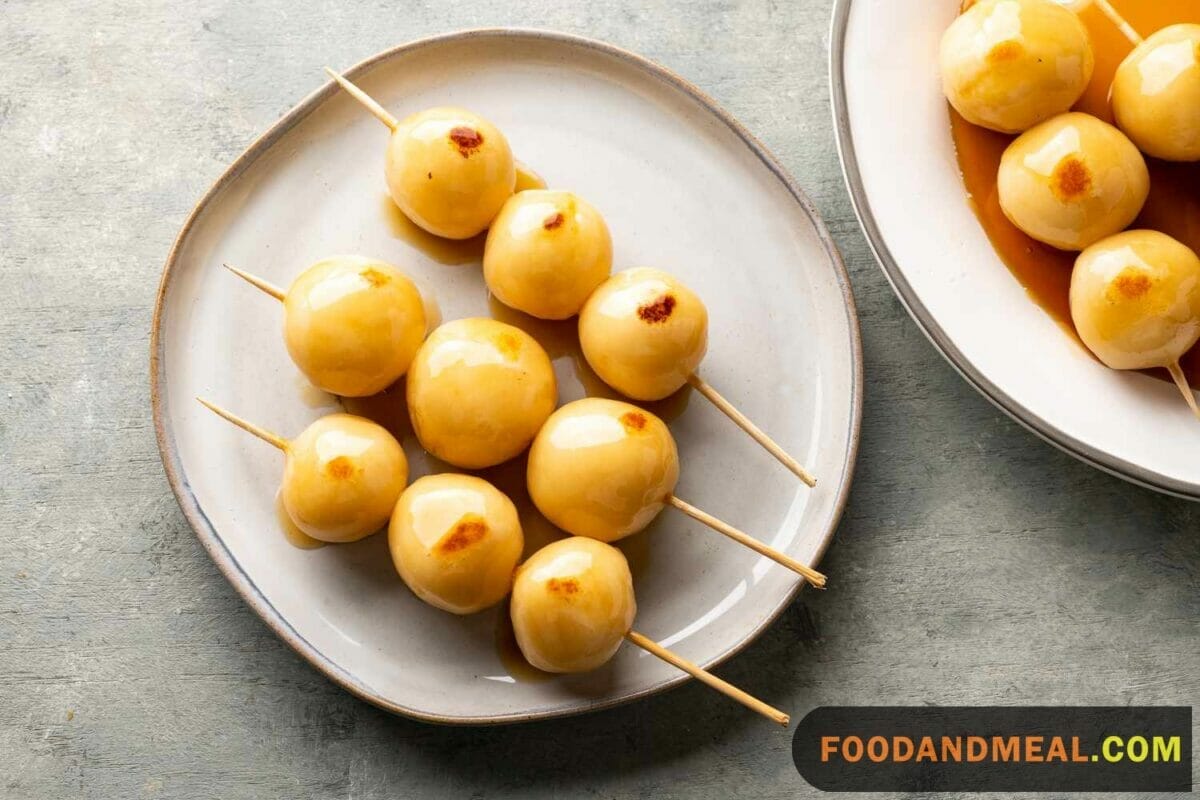
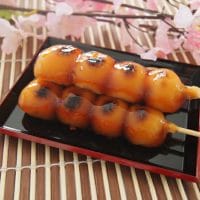
Kushi Dango With Sweet Shoyu Sauce
Equipment
Ingredients
- 1 cup rice flour glutinous
- cup warm water
- 1 cup water
- cup sugar
- 2 tbsp soy sauce
- 1 tbsp cornstarch
Instructions
- Put rice flour in a bowl then pour water and mix well.
- Knead the dough then make round dumplings. Small ones.
- Place the balls in boiling water for about 15 Minutes then remove them and cool.
- Skewer 3-4 balls to a bamboo stick.
- Mix sugar, water, and soy sauce pan.
- Boil over medium heat then add cornstarch slowly and quickly mix them.
- Pour the shoyu sauce over the balls (dango) on the skewer generously.
- Let them sit for about 20 Minutes and enjoy.
Video
Notes
Nutrition
© Food And Meal
This website provides approximate nutrition information for convenience and as a courtesy only. Nutrition data is gathered primarily from the Spoonacular Database, whenever available, or otherwise other online calculators.
Alternative Method: Preparing Japanese Kushi Dango with a Steamer
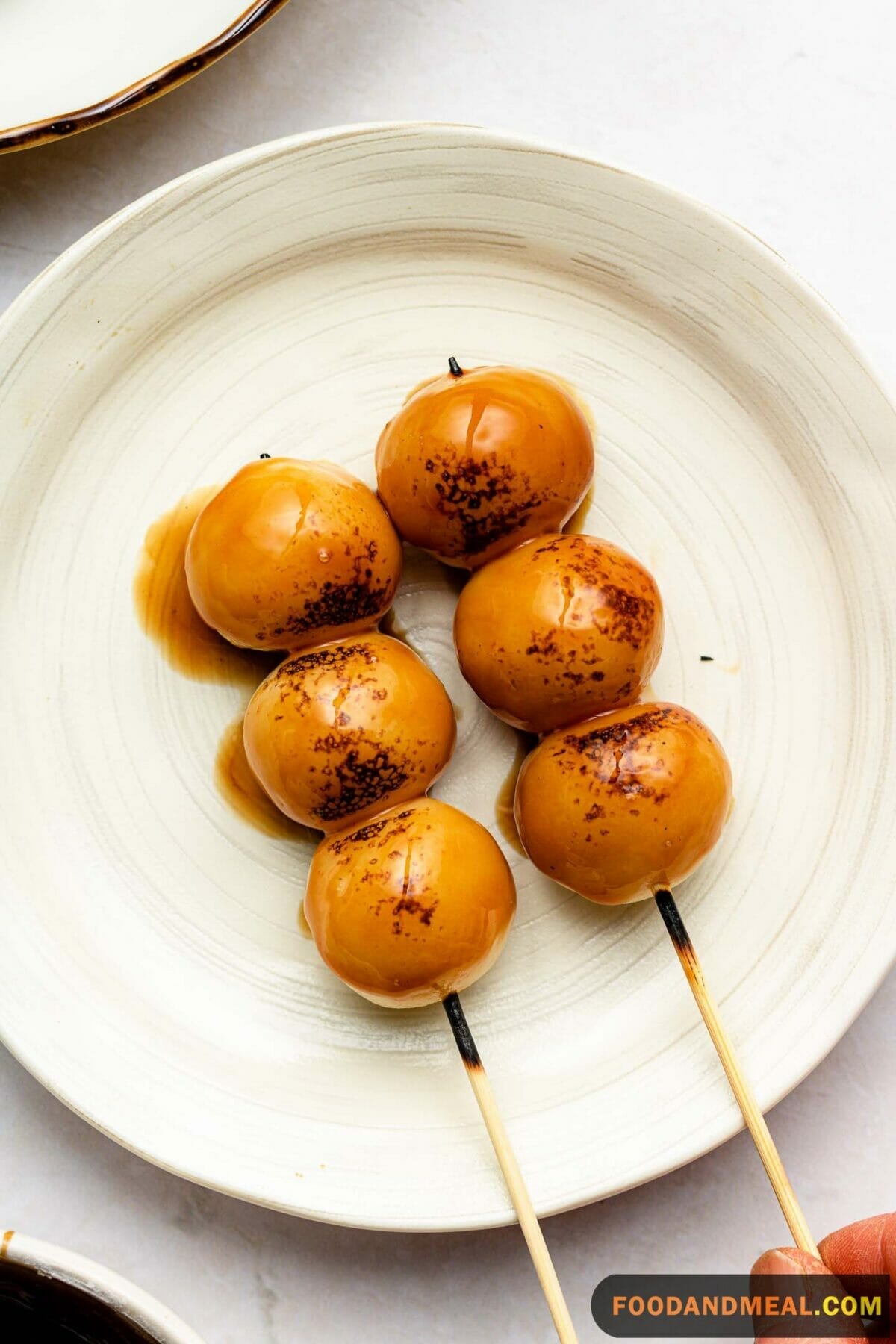
Ingredients:
- 1 cup Mochiko sweet rice flour
- 1/4 cup granulated sugar
- 1/2 cup water
- A pinch of salt
- Your choice of toppings (e.g., soybean flour, matcha powder, or sweet syrup)
Instructions:
- Prepare Your Steamer: Fill a steamer with water and bring it to a boil. Ensure you have a steaming tray or rack ready for the dango.
- Mix the Ingredients: In a mixing bowl, combine the Mochiko sweet rice flour, sugar, and a pinch of salt. Gradually add the water and mix until you have a smooth, thick batter.
- Form the Dango: Take small portions of the batter and roll them into bite-sized balls, about 1 inch in diameter. This should yield about 12 to 15 dango.
- Steam the Dango: Place the dango on the steaming tray or rack, ensuring they are not touching. Cover and steam for 15-20 minutes. The dango will become translucent when they are done.
- Cool and Serve: Once steamed, allow the dango to cool slightly. If desired, roll them in your chosen toppings, such as soybean flour, matcha powder, or sweet syrup.
- Enjoy: Your steamed Japanese Kushi Dango is now ready to be savored. This alternative method results in a soft, chewy texture that’s perfect for those who prefer a different take on this delightful treat.
Tips for making Japanese Kushi Dango
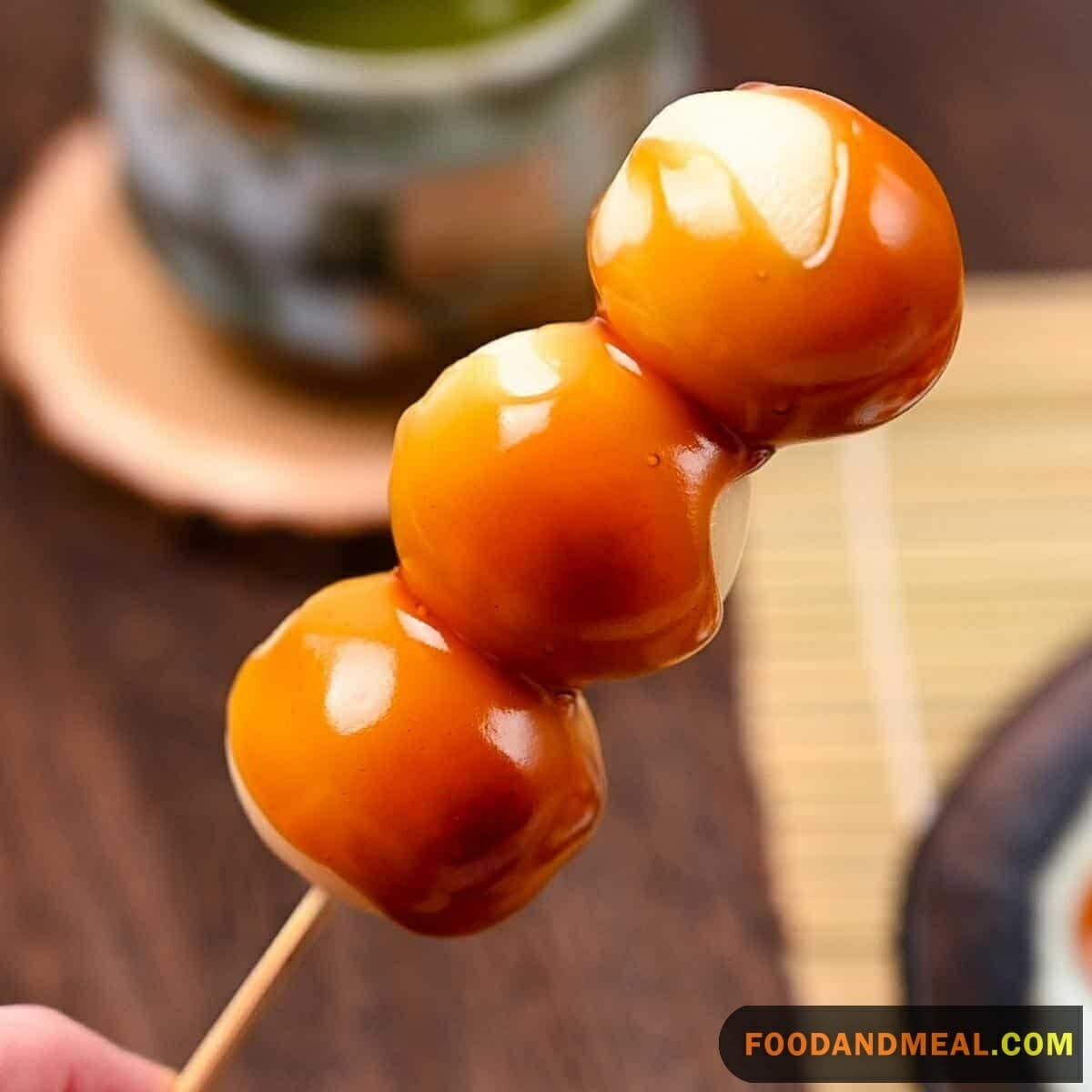
Serving Suggestions
- Traditional Toppings: Serve your dango with traditional toppings like sweet soy sauce, matcha powder, or kinako (soybean flour) for an authentic experience.
- Fruit Companions: Fresh fruits like strawberries, kiwi, or mandarins make for a refreshing and colorful side that pairs beautifully with the sweet dango.
- Tea Pairing: Japanese green tea, such as sencha or genmaicha, is an ideal beverage to complement the flavors of dango. The subtle bitterness of green tea balances the sweetness.
- Dango Skewers: Thread your dango onto skewers with pieces of fresh fruit, creating a delightful and convenient way to enjoy them.
- Savory Variation: If you prefer a savory twist, dip the dango in a mixture of soy sauce and sesame oil or wrap them in nori (seaweed) sheets.
Cooking Tips
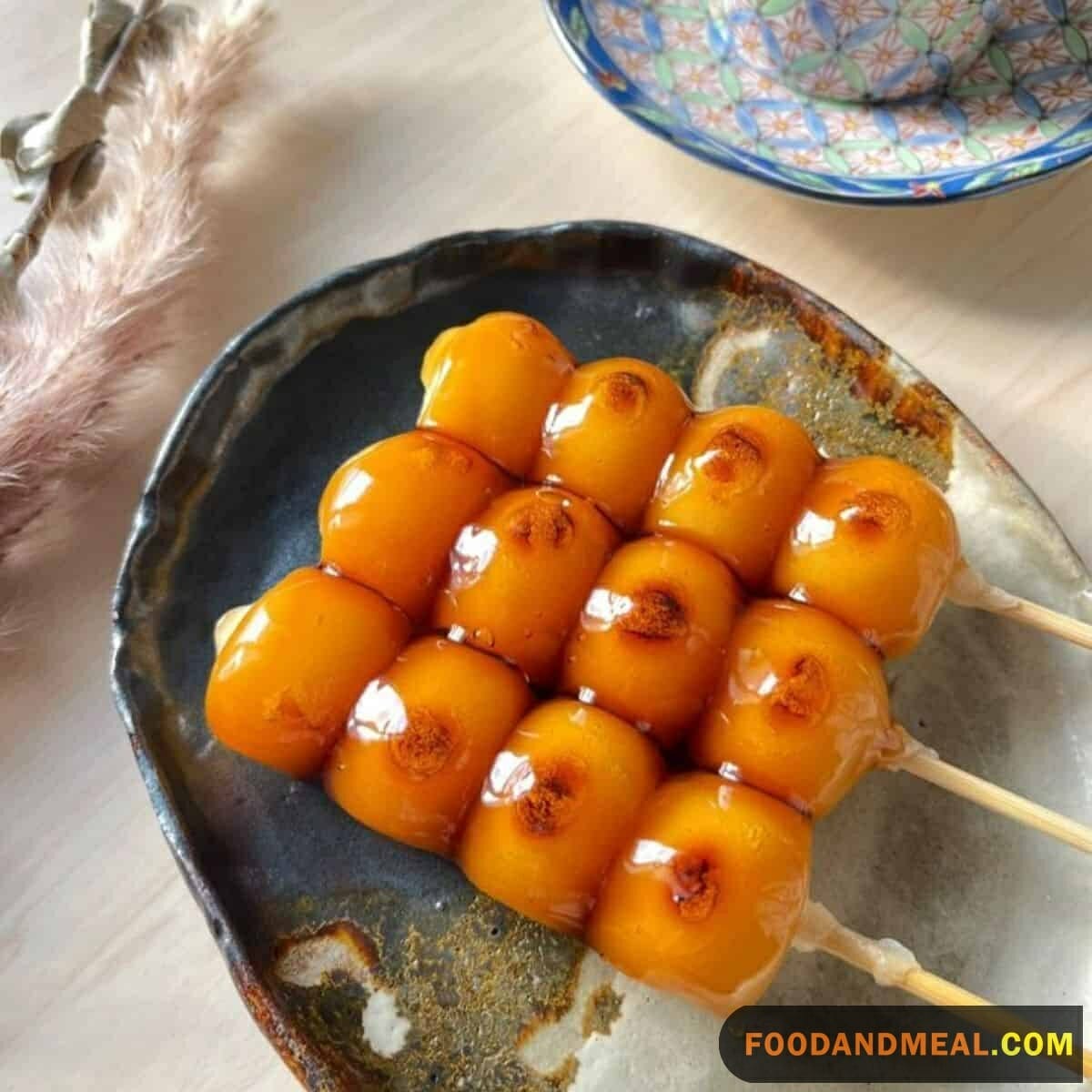
- Consistency Matters: Achieving the right consistency of the dango dough is crucial. It should be soft and pliable but not too sticky. Adjust the amount of water or rice flour as needed.
- Sizing Is Key: Keep the dango pieces small, about the size of a small marble, to ensure even cooking and a pleasing mouthful.
- Toppings are Personal: While traditional toppings are great, feel free to get creative and try your favorite flavors like chocolate drizzle, chopped nuts, or fruit preserves.
- Keep Covered: When steaming, make sure the steamer is covered tightly. This prevents condensation from dripping onto the dango, which can affect their texture.
- Freshness First: Dango is best enjoyed fresh. If you have leftovers, store them in an airtight container at room temperature for a day or two. Afterward, refrigerate and lightly re-steam to regain their softness.
FAQs about Japanese Kushi Dango

- Can I store Japanese Kushi Dango? Yes, you can store them in an airtight container at room temperature for a day or two. For longer storage, refrigerate and lightly re-steam to refresh them.
- What is the ideal dango consistency? Dango dough should be soft and pliable but not overly sticky. Adjust the water or rice flour as needed to achieve this.
- Can I use other toppings besides traditional ones? Absolutely! Get creative and try your favorite toppings like chocolate, nuts, or fruit preserves.
- How do I prevent dango from getting too sticky? Ensure the steamer is covered tightly during cooking to prevent condensation from dripping onto the dango.
- Can I make dango in advance for a gathering? Yes, you can prepare them ahead of time. Store them in an airtight container and lightly re-steam before serving to restore their softness.
Experience the delight of Japanese Kushi Dango with our unique recipe. Subscribe for more culinary adventures and share the magic with fellow food enthusiasts.
I'm James F Anderson, a noted sous chef from London and a Le Cordon Bleu alumnus. My career began in a Michelin-starred Parisian eatery, where my blend of classic and contemporary cooking, using seasonal ingredients, earned accolades. Recognized in culinary publications and on cooking shows, I’m committed to mentoring aspiring chefs and delivering memorable dining experiences, marking me as a standout talent in the culinary world.

